|
Spanish explorers are said to have visited the Sikeston area in 1541. At that time the region consisted of cypress swamps and forested prairies. In 1789 the King of Spain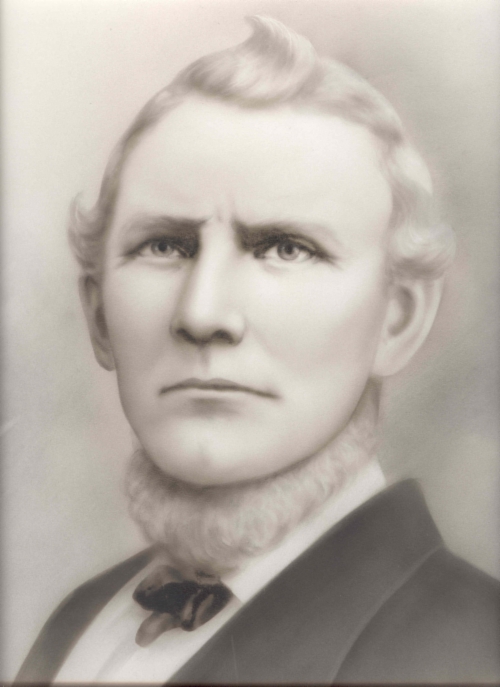 ordered an overland route be established between New Orleans and St. Louis. This frontier road crossed through the area that would eventually become the City of Sikeston. Francis Paquette originally owned the land on which Sikeston was built. In 1829 this land was purchased by the Stallcup family. City founder John Sikes, acquired control of the land following his marriage to Catherine Stallcup Myers in 1859. In 1860 John Sikes recorded a plat with the Scott County Recorder. On it Sikes wrote," I am going to start me a town, and I am going to call it the Town of Sikeston". ordered an overland route be established between New Orleans and St. Louis. This frontier road crossed through the area that would eventually become the City of Sikeston. Francis Paquette originally owned the land on which Sikeston was built. In 1829 this land was purchased by the Stallcup family. City founder John Sikes, acquired control of the land following his marriage to Catherine Stallcup Myers in 1859. In 1860 John Sikes recorded a plat with the Scott County Recorder. On it Sikes wrote," I am going to start me a town, and I am going to call it the Town of Sikeston".
CIVIL WAR
Realizing transportation was vital to the community’s development; the Cairo-Fulton (Ark) railroad was extended from Charleston to Sikeston in 1860. With Sikeston’s location on the railroad and the primary overland route between St. Louis and New Orleans, it held strategic importance during the Civil War. With Commerce, being a Union stronghold and New Madrid being held by the Confederates, Sikeston was occupied by both sides as they sought to move men, artillery and supplies through area swamps. Local history tells of an attempt by Confederate guerillas to hang city-founder John Sikes from an oak tree in front of his store. His life was saved when Sikes’s wife, Catherine, gave the guerillas $100 she had hidden in a sack of cotton. It is also rumored that guerillas robbed a Charleston bank and buried the money at the base of a tree located at the corner of Tanner and N. Kingshighway. (The money has yet to be found.)
DRAINING OF SWAMPS AND WETLANDS
Following the Civil War, the community focused on growth and development. Postal service resumed in 1867, and in 1869 residents approved its first tax-supported public school. In 1875 the Town of Sikeston, population 250, was incorporated by the State of Missouri.
Despite this progress, the area was a wetland forest created by constant flooding of the Mississippi River and an average rainfall of 45 inches a year. Southeast Missouri landowners realized the great potential of the area as farmland if the swamps could be drained. In 1907, following the passage of state legislation creating a dedicated tax to pay for drainage efforts, the Little River Drainage District was formed. Its draining of over 1.2 million acres of swampland revealed some of the most fertile farmland in the world. Land that formerly sold for $.60 an acre now sold for $200. This, with the introduction of cotton and other cash-crops, created a period of great prosperity and economic growth. Sikeston’s population tripled, commercial telegraph and telephone service was started.
By 1912 Sikeston had approximately 50 businesses; several general stores, two flour mills, three churches, three banks, two newspapers and two schools. City-provided water, sewer and electrical service were established, and brick streets were installed. It is said that during this period Sikeston become home to more millionaires than any city of its size in the United States.
GREAT DEPRESSION
The depression took its toll on area residents. Two of Sikeston’s three banks failed. The 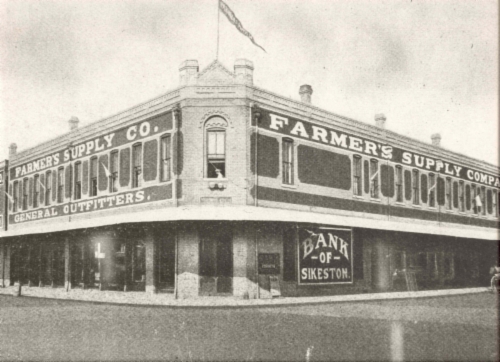 International Shoe Factory temporarily suspended operations. When work resumed, a month later, employment had been reduced by 100 workers. World War I veterans were using the bonus paid by the federal government to purchase land and homes, creating the area known as "Bonus Hill". Lots, without electric, gas, water or sewers were purchased for $200 an acre. International Shoe Factory temporarily suspended operations. When work resumed, a month later, employment had been reduced by 100 workers. World War I veterans were using the bonus paid by the federal government to purchase land and homes, creating the area known as "Bonus Hill". Lots, without electric, gas, water or sewers were purchased for $200 an acre.
Several "New Deal" projects were implemented. WPA workers constructed the Sikeston National Guard Armory, a new swimming pool, golf course, and paved N. Kingshighway, Ranney and Park Streets in concrete. Other "New Deal" policies did not result in their desired effect. Federal subsidies paid to landowners to reduce farm production were instrumental in inciting the Sharecroppers’ Strike of 1939. Approximately 2,000 displaced sharecroppers camped outside Sikeston along the country’s two most heavily traveled highways, 60 and 61. The strike made national news, and laid the groundwork for the establishment of social service agencies in Missouri’s Bootheel.
By the end of the decade, demand for Southeast Missouri’s "White Gold" had increased. The Sikeston Compress and Warehouse was operating day and night, and had over 6,500 bales of cotton in storage. A mill tax to support the Sikeston Public Library was implemented.
WORLD WAR II
The war years saw a large increase in Sikeston’s population. From 1940 until 1944 Sikeston’s Memorial Airport was known as the Harvey Parks Airport and served as the site for the 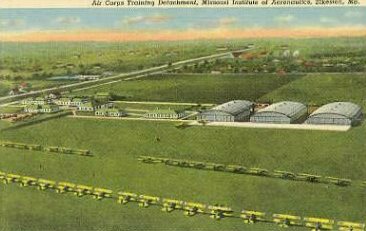 Missouri Institute of Aeronautics. General Hap Arnold, anticipating the start of World War II, asked the Institute to triple their flight training enrollment. Over 6,000 cadets, including World War II flying aces Robert S. Johnson and Harold E. Comstock graduated from the Institute. (The gates of the Institute can be seen at Sikeston Veterans’ Memorial Park.) The City’s first hospital, Sikeston General Hospital located at 101 Gladys Street, was established in response to the flight school’s needs. Missouri Institute of Aeronautics. General Hap Arnold, anticipating the start of World War II, asked the Institute to triple their flight training enrollment. Over 6,000 cadets, including World War II flying aces Robert S. Johnson and Harold E. Comstock graduated from the Institute. (The gates of the Institute can be seen at Sikeston Veterans’ Memorial Park.) The City’s first hospital, Sikeston General Hospital located at 101 Gladys Street, was established in response to the flight school’s needs.
Local residents and especially students supported America’s war effort by raising money for the construction of three B-25 bombers (Spirit of Sikeston, the Sikeston Bulldog and the City of Sikeston). It is believed all three planes were used in the Doolittle Raid and are at the bottom of Pacific somewhere between Japan and China.
During this period Lambert’s Café opened its first restaurant on South Main Street in Sikeston.
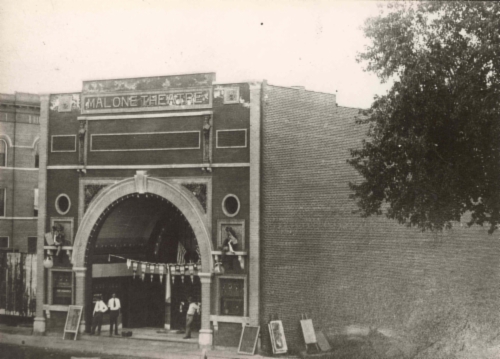
The war created a labor shortage, hampering agricultural production. German and Italian prisoners of war, volunteering to help with essential farm crops, were housed in camps outside of Sikeston. The prisoners were paid a small salary, were allowed to attend the church of their choice, and used the public swimming pool and movie theater. At the close of the war, several elected to stay in the region.
POST WAR YEARS
The Sikeston area, as well as the country, flourished following the war. Transportation, once again, became a major aspect of Sikeston’s development as Highway 55 was upgraded to an interstate. Sikeston’s strategic location at the intersection of Interstates 55 and 57, and US Highways 60, 61 and 62 made it a prime location for national and regional distribution centers and motor freight carriers.
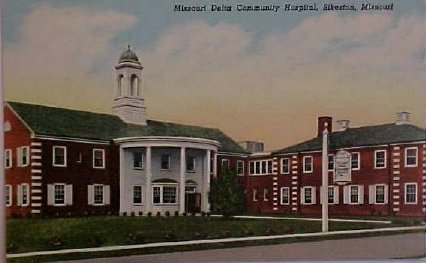
In 1948, Missouri Delta Community Hospital (now known as Missouri Delta Medical Center) was founded. The Sikeston Jaycees held their first "Bootheel Rodeo" in 1953. 20-Year old Elvis Presley and Johnny Cash performed at the Sikeston Armory in 1955.
California Governor Ronald Reagan was the guest speaker at the 1965 Sikeston Chamber of Commerce Annual Banquet. In 1968 Sam Walton opened Wal-Mart Store #9 in Sikeston. It was the first Wal-mart store located outside of Arkansas. The Sikeston Field House was constructed in 1969.
In 1973 the Kenny Rogers Children’s Center (formerly the Scott-Mississippi-New Madrid County United Cerebral Palsy Center) opened. Sikeston constructed a municipally-owned 235-megawat, coal-fired electric generation station in 1978.
James Wilder, a graduate of Sikeston Senior High School, was drafted by the Tampa Bay Buccaneers in 1981.
Sikeston’s Malone Theatre was renovated during the early 1980’s, creating the Chaney-Harris Cultural Center. Unfortunately it was destroyed by fire in 1985. On May 15, 1986 a tornado hit the City of Sikeston, destroying approximately 100 homes.
Good Humor-Breyers (Unilever) opened a $35 million plant in the Sikeston Business, Education & Technology Park in 1998. This facility complements the firm’s existing plan that began operations in 1980. Total employment at Unilever’s Sikeston facilities is estimated to be just over 500.
Albritton-Mayer Cultural Center for Performing Arts opened in 2002. That same year the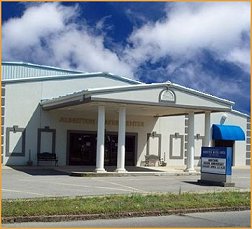 Clinton Community Building was constructed. This project was made possible by the gift of $350,000 from Mr. and Mrs. Ray Clinton. In 2002 Sikeston voters elected to establish a constitutional charter form of government. In 2006, Southeast Missouri State University and Three Rivers Community College opened a joint campus, Sikeston Area Higher Education Center, in the Sikeston Business, Education & Technology Park. Clinton Community Building was constructed. This project was made possible by the gift of $350,000 from Mr. and Mrs. Ray Clinton. In 2002 Sikeston voters elected to establish a constitutional charter form of government. In 2006, Southeast Missouri State University and Three Rivers Community College opened a joint campus, Sikeston Area Higher Education Center, in the Sikeston Business, Education & Technology Park.
During the 2004 Major League Baseball Draft former Sikeston High School baseball player Blake DeWitt was picked by the Los Angeles Dodgers. Eric Hurley, who was born in Sikeston, was also selected during the 2004 Draft to pitch for the Texas Rangers. Sikeston native Neal Boyd, a pop opera singer, was the 2008 winner of America’s Got Talent. He was awarded the $1-million prize and a headline show in Las Vegas, Nevada.
In January 2009, Sikeston experienced the worst natural disaster to hit the community since the 1986 tornado. A massive ice storm damaged trees, and knocked-out electrical service to the  City for several days. In February, the YMCA of Southeast Missouri opened its newly renovated facility. Located on Taylor Street, the facility provides a fitness center, elevated walking track, and aquatic center. That same year Orgill, the country’s largest hardline distributor, opened its 795,000 square-foot facility in Sikeston. The firm’s largest distribution center, to date, it will house $35 million worth of stock. In April 2015, Orgill announced a 250,000 sq. ft. expansion of their facility, bringing their operations to well over a million square feet. The Sikeston facility is the company's largest distribution center. City for several days. In February, the YMCA of Southeast Missouri opened its newly renovated facility. Located on Taylor Street, the facility provides a fitness center, elevated walking track, and aquatic center. That same year Orgill, the country’s largest hardline distributor, opened its 795,000 square-foot facility in Sikeston. The firm’s largest distribution center, to date, it will house $35 million worth of stock. In April 2015, Orgill announced a 250,000 sq. ft. expansion of their facility, bringing their operations to well over a million square feet. The Sikeston facility is the company's largest distribution center.
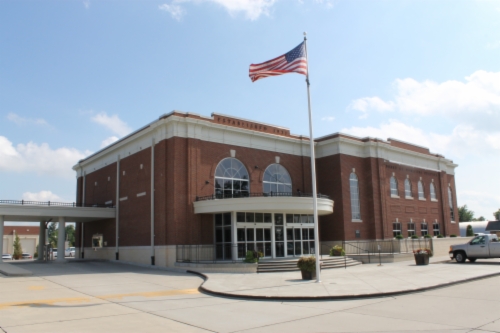 In 2010, the Sikeston Board of Municipal Utilities opened its new 30,000 square foot administrative building at 107 East Malone Avenue. In 2011 the Sikeston Housing Authority moved into its new administrative facility at 360 Allen Boulevard. In 2010, the Sikeston Board of Municipal Utilities opened its new 30,000 square foot administrative building at 107 East Malone Avenue. In 2011 the Sikeston Housing Authority moved into its new administrative facility at 360 Allen Boulevard.
In 2012, Sikeston Public Safety relocated to its new 25,000 square-foot headquarters on South Kingshighway. DPS Headquarters was previously located in a former post office constructed in 1939. Also in 2012, FedEx Ground opened a new 50,000 square-foot distribution center in Sikeston Business, Education & Technology Park.
In August 2013, Three Rivers Community College broke ground on the college’s new Eastern Campus. The campus was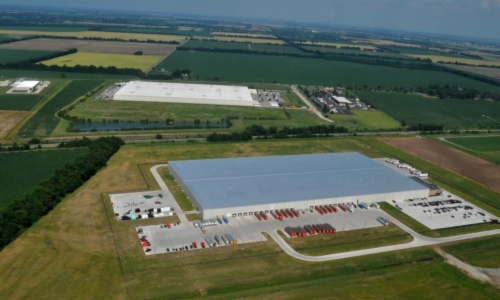 completed in March 2015, and will serve 1,500 students with expanded degree and transfer programs. The new building replaces the College’s current facility which had reached its capacity. In May 2014, a new Holiday Inn Express hotel opened in Sikeston along with a new Colton's Steak House. In March 2014, the Sikeston Do-It-Best Retail Service Center opened. This 550,000 square-foot facility will employ 125 and have an annual payroll of $4 million. With the addition of Do It Best and Orgill, Inc. located in the Sikeston Business, Education and Technology Park, the country's largest independently owned, and co-op owned hard-line distribution centers are located in the Industrial Park. completed in March 2015, and will serve 1,500 students with expanded degree and transfer programs. The new building replaces the College’s current facility which had reached its capacity. In May 2014, a new Holiday Inn Express hotel opened in Sikeston along with a new Colton's Steak House. In March 2014, the Sikeston Do-It-Best Retail Service Center opened. This 550,000 square-foot facility will employ 125 and have an annual payroll of $4 million. With the addition of Do It Best and Orgill, Inc. located in the Sikeston Business, Education and Technology Park, the country's largest independently owned, and co-op owned hard-line distribution centers are located in the Industrial Park.
|
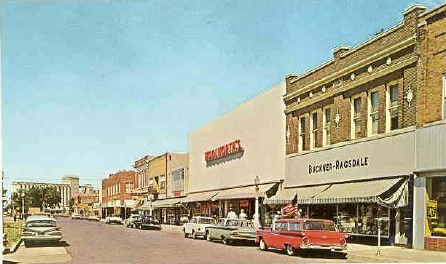
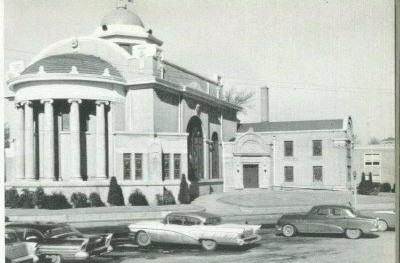
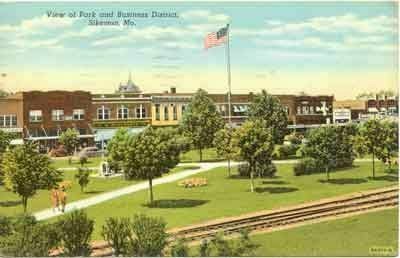
 Staff Directory
Staff Directory


